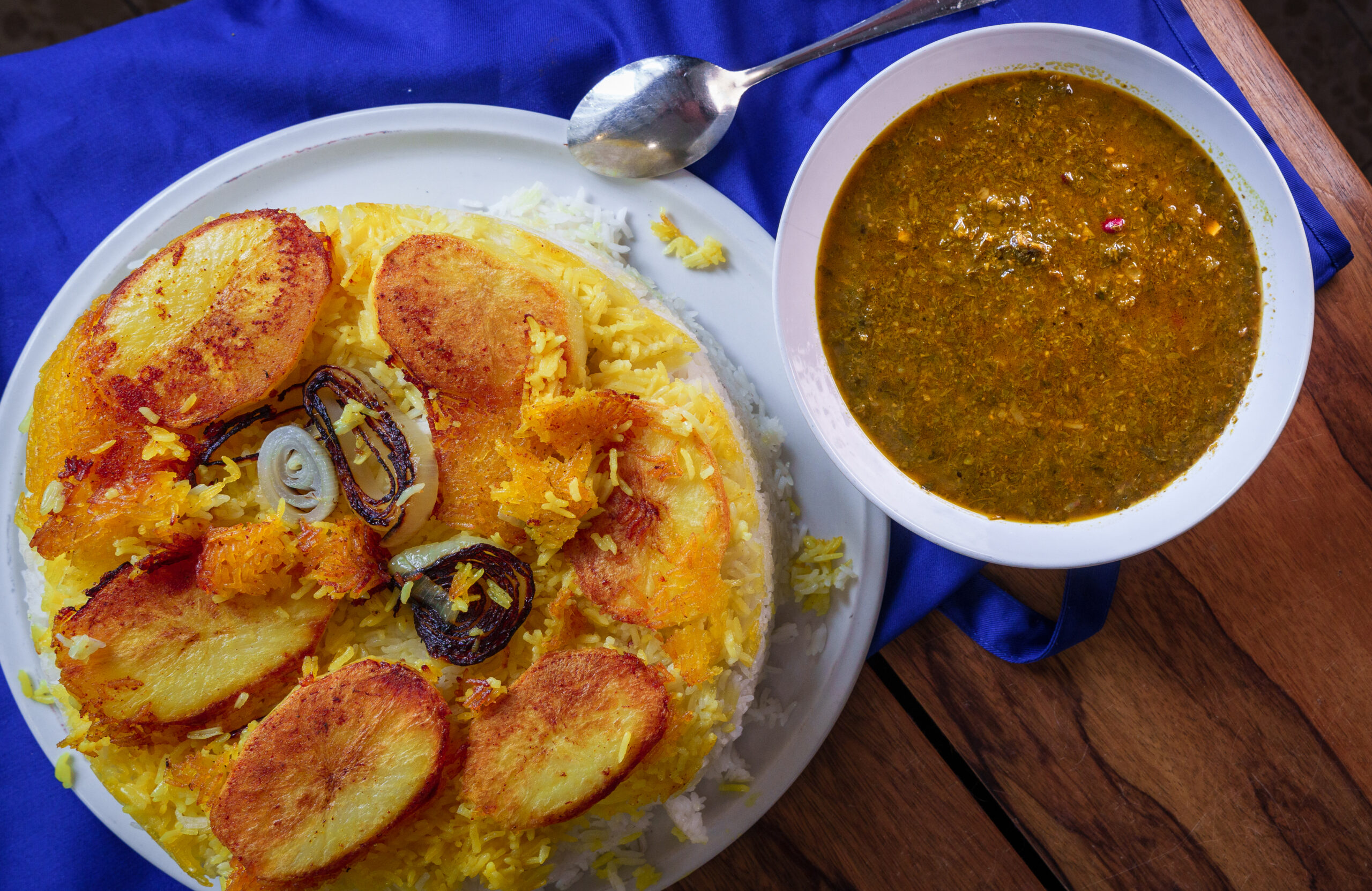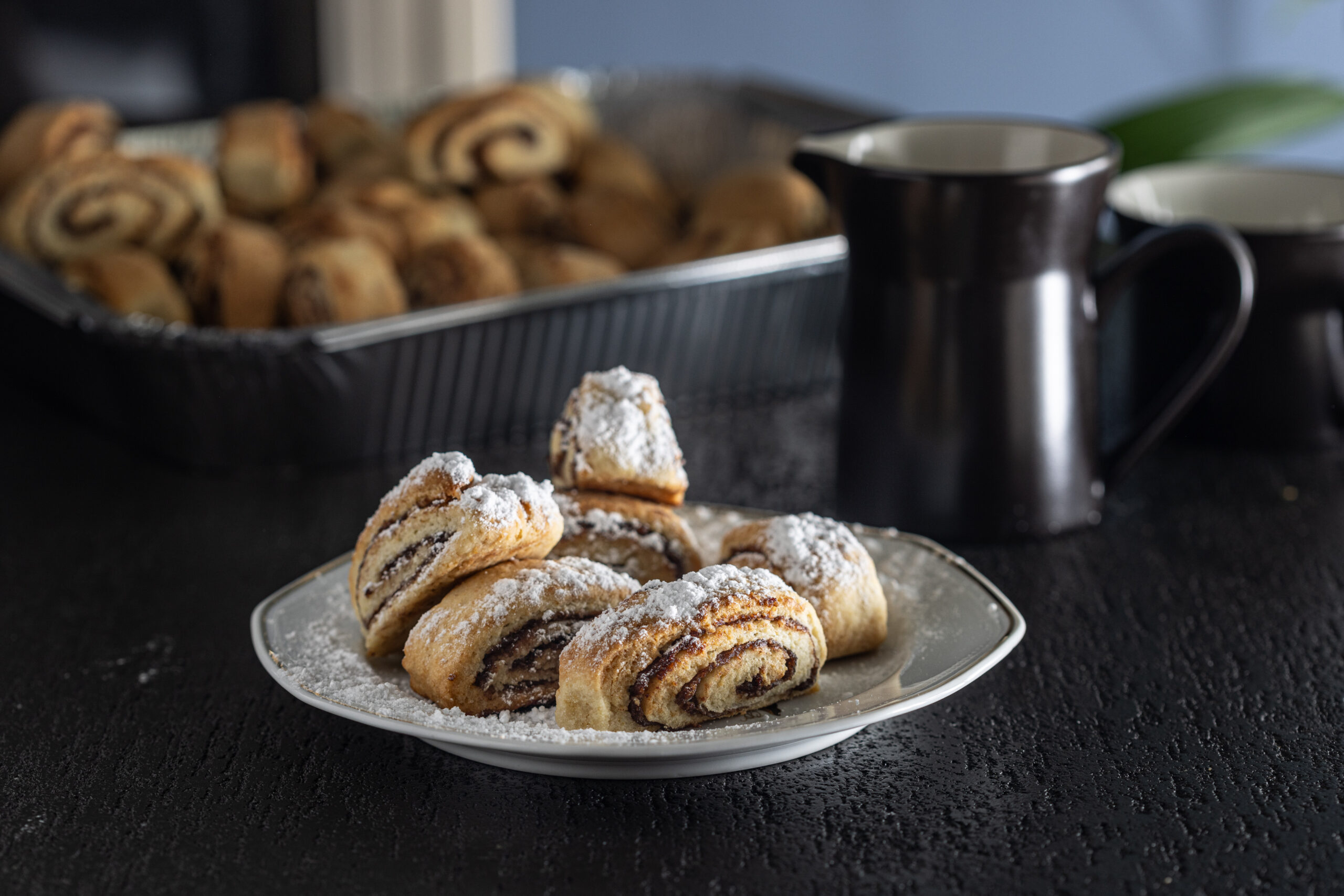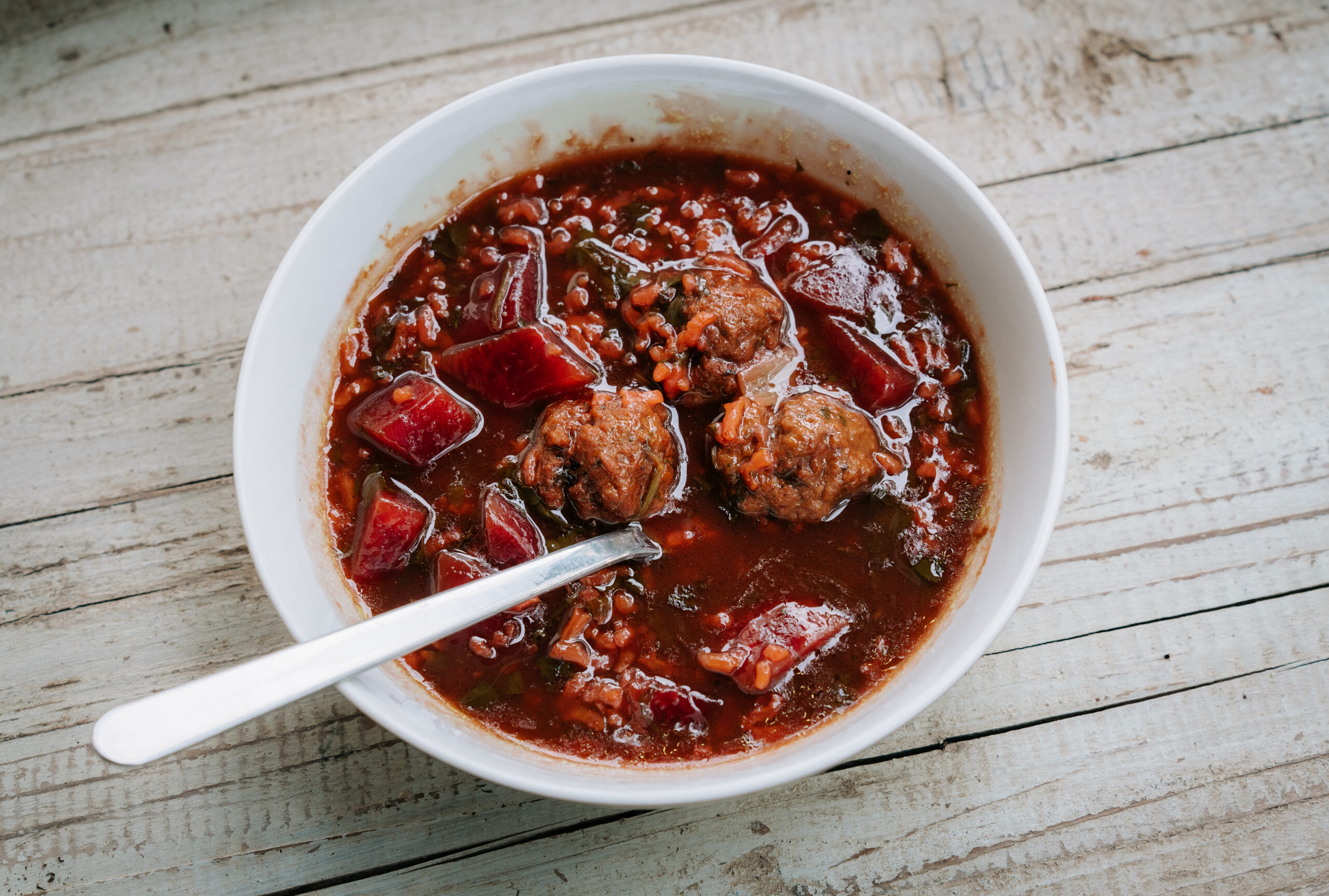This recipe is part of Asif’s Open Kitchen Project where cooks who were evacuated during the war are invited to a home in Tel Aviv to cook a dish that they miss from their own home. Would you like to participate in the project? Register here.
Malka Sadki’s face does not disclose her age — 79. Clues to her age are also elusive in her meticulous work and the way she moves around the kitchen with ease — even as a guest. Five months ago, she was evacuated from her home on moshav Avdon near the border with Lebanon. “There’s a lot of chaos on the moshav,” she says, “with loud booms, soldiers, and tanks. It’s like a military base.”
Malka has five children, 16 grandkids, and four great-grandchildren, some of whom live near her and often stay with her during peacetime. “When everyone gathers at my place, we can have 25 or 27 people. I enjoy cooking; I do it everyday and I love entertaining. When I was younger, I used to host a lot, but now it’s a bit challenging for me due to problems with my legs and back. When the extended family visits, my daughters come and help me,” she says.
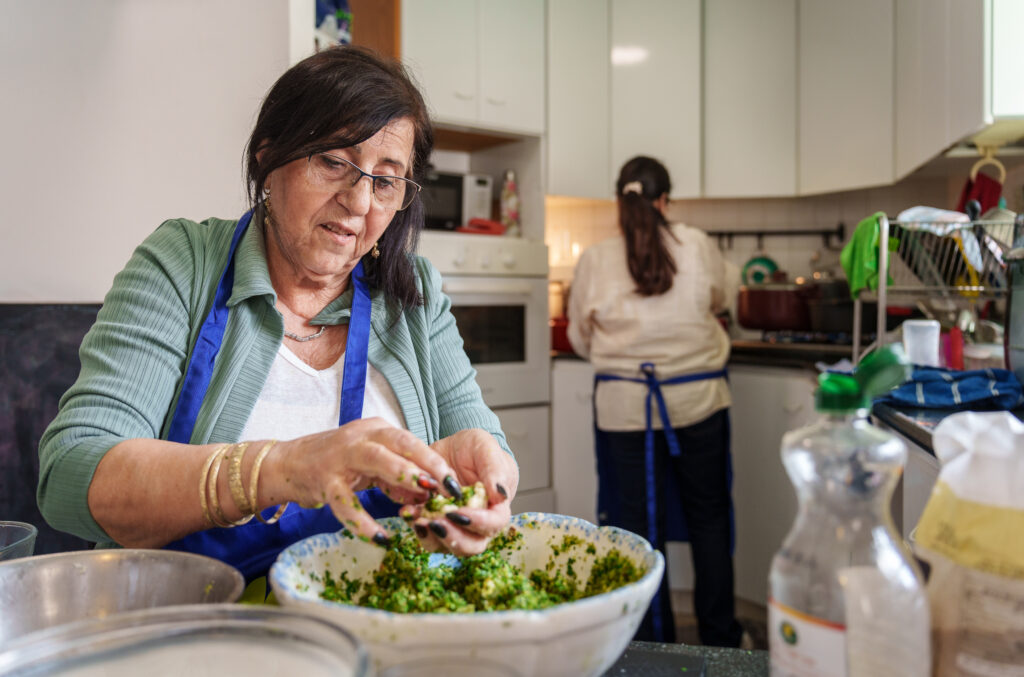
After several months of not cooking, Malka’s cooking today in Givatayim alongside her friend Valerie Chen at the home of Maayan Dahan, Valerie’s niece. Malka learned the art of cooking from her mother back in Iran, where they resided in the city of Qasreshirin. In those days, relations between Jews and their Iranian neighbors were much warmer. “We lived together, side by side. During Passover, our neighbors used to bring us dairy products specially prepared for the holiday, and we would send them nuts and fine pistachios that we loved,” Malka explains. When she was 25, she immigrated to Israel with her husband and three of their children.
“I cook what my children like,” she says, including kibbeh, stews, meatballs, and more. Malka and Valerie have put together a meat-free menu today with their vegetarian hostess in mind. “We want her to enjoy the meal too,” explains Malka.
Both friends spread out their ingredients on the counter, sharing a laugh at the price differences between the north and the center. “One pepper here costs 60 agorot, while at Faisal’s in the north, 1 kilo costs 60 Agorot,” says Valerie. Malka doesn’t let it bother her and proceeds with making her sabzi. At home, she’s sewed towels for the pot lids (to capture the steam) but here she makes do with simple dish towels — one for each pot.
Every Friday evening at her house, Malka serves sabzi with meat. “I prepare kibbeh for lunch so that everyone can last until the evening, and in the evening, I serve sabzi, fish, meat, and tahdig,” she explains.
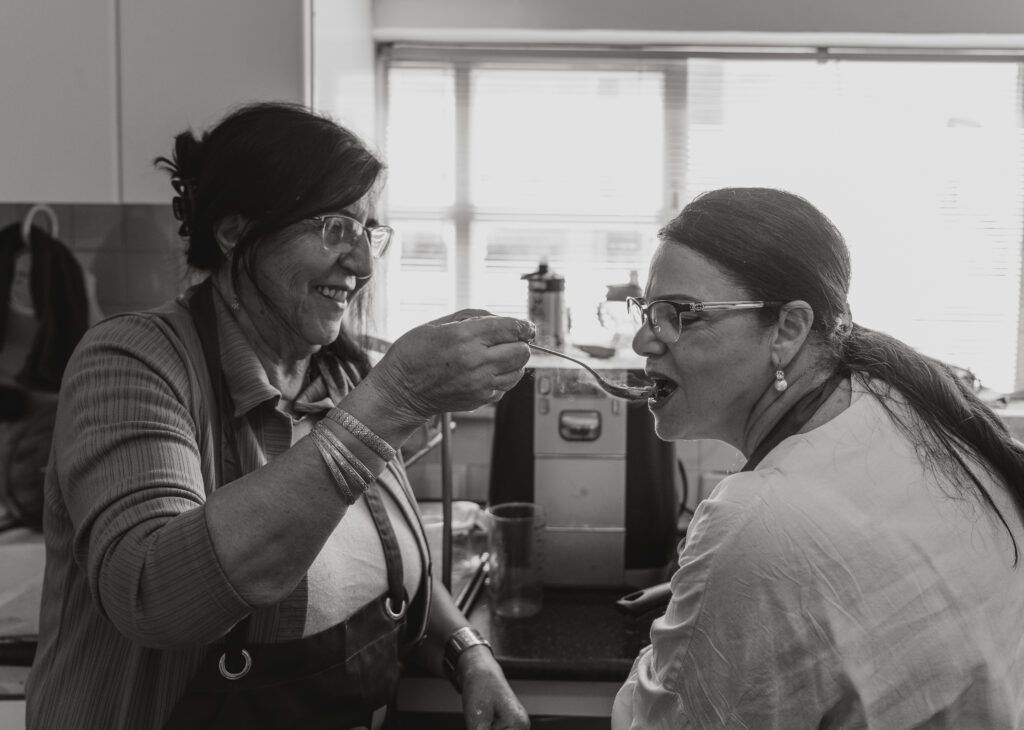
For the vegetables puree:
½ parsnip, peeled and roughly chopped
½ celery root, peeled and cut into eighths
½ leek, cleaned and coarsely chopped
4 whole garlic cloves, peeled
For the green puree:
½ bunch parsley, chopped
½ bunch cilantro, chopped
½ bunch spinach, coarsely chopped
½ bunch celery stalks with the leaves, coarsely chopped
For the sabzi:
Olive oil
1 onion, finely chopped
5 Persian or Omani limes
1 teaspoon ground turmeric
1½ tablespoons salt
1 teaspoon black pepper
2 tablespoons dried fenugreek leaves (available in spice shops and health food stores)
2 tablespoons tamarind paste
500 grams (1.1lb) kidney beans, soaked overnights and cooked
For the tahdig:
3 cups basmati rice, washed
4 teaspoons salt
3 tablespoons olive oil
1 heaping tablespoon ground turmeric
1½ onions, peeled and thinly sliced into rings
1 large potato or 2 small potatoes, peeled and cut into 1cm (½ inch) thick rounds
- Prepare the root vegetables puree: Place all of the ingredients in a food processor and grind to a puree, 2-3 minutes. Transfer to a clean bowl.
- Prepare the greens mixture: Place all the ingredients in a food processor and grind to a paste.
- Using a meat tenderizer or the bottom of a glass, pound one Persian lemon until it cracks open and remove the bitter seeds. Add the broken lemon to the green puree.
- Soak the rice: In the meantime, place the rice in a pot, cover with water until it reaches about 3 cm (1.2 inches) above the rice, and add 4 teaspoons of salt and let soak for 30 minutes.
- Prepare the sabzi: Heat the olive oil in a wide pan over medium heat. Add the chopped onion and cook until golden, about 7 minutes, occasionally stirring.
- Add the root vegetable puree and cook for 5 minutes, stirring occasionally. Add the green puree with the cracked Persian lemon, the remaining 4 whole Persian lemons (each only slightly cracked but still intact), turmeric, salt, black pepper and dried fenugreek leaves and mix well. Cook for 1 minute.
- Add 1½ liters (6 ½ cups) water and bring to a boil. Reduce to medium heat, cover and cook for 30 minutes. Add 2 tablespoons tamarind paste and the cooked beans and cook for 30 minutes.
- Prepare the tahdig: Drain the rice well. Place the rice in a pot, cover with plenty of water seasoned with salt, bring to a boil and cook for 7 minutes, until al dente, similar to cooking pasta. Drain.
- Pour enough olive oil into a tahdig pot (a large non-stick pot which can hold all of the ingredients will also work) to cover the bottom evenly. Add turmeric fry until it releases a strong aroma, 2-3 minutes. Remove from the heat.
- Layer the sliced potatoes evenly to cover the bottom of the pot, and arrange the onion rings among the potatoes. Add the rice on top in an even layer, lightly pressing it down with a wooden spoon. Using the handle of a wooden spoon, make holes in the rice down to the bottom of the pot. These will act as air pockets. Cover with a towel and place the lid on top. Cook for 30 minutes over a low-medium heat. The tahdig is ready when the potatoes at the bottom are very crunchy (check with a wooden spoon). Carefully flip onto a large plate and serve with the sabzi.
